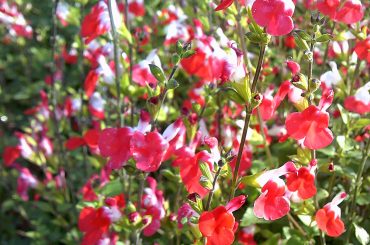Table of Contents
An apple tree is one of the easiest trees to grow in the UK, and your garden receives a wide range of benefits from having one. Whether you plant a single tree, have a whole orchard, or have an environmentally friendly forest garden, apple trees are the perfect choice. The apple trees are easily grown, extremely productive, and wildlife-friendly, and high yields are guaranteed with apple trees. There is a reason why apples are an extremely popular cultivated fruit crop.
Once it is decided that you will plant apple trees in your garden, you need to take care of your apple trees for successful fruiting. One important upkeep is pruning apple trees. Pruning is done to remove any dead, diseased, or damaged parts so that the rest of the tree is kept safe.
In this article, you will learn what pruning is, why pruning is necessary, how to prune, when to prune an apple tree in the UK, and other care instructions for apple trees.
About The Apple Tree
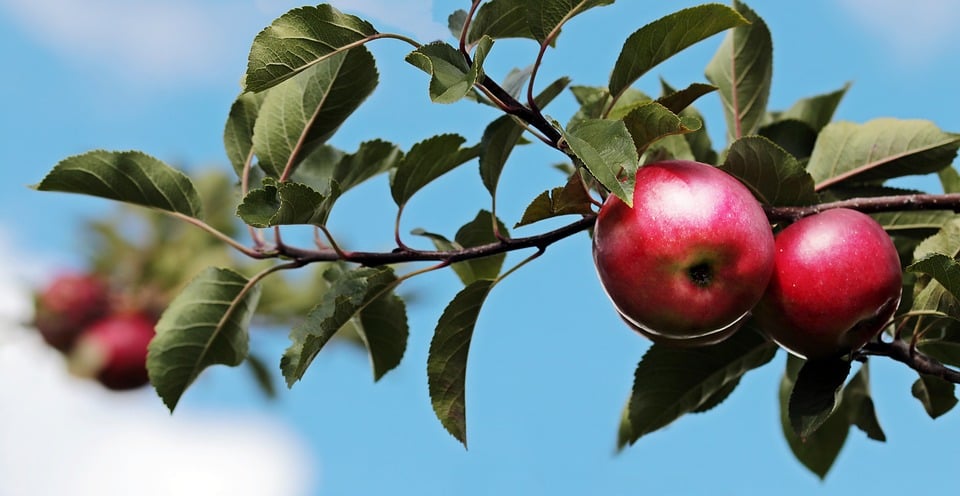
The apple tree is part of the Malus genus and originated from Central Asia. Apples had been grown in Asia and Europe for thousands of years, and then, the European colonists took the apples over to North America. Now, there are now different varieties all over the world. This fruit is significant in religions and mythology worldwide, like Greek, Norse, and European Christian culture. Apples are eaten raw, used in cooking, and made into cider.
A Brief Overview of Apple
- Scientific Name – Malus domestica
- Common Name – Apple Tree
- Plant – Tree
- Hardiness – H6
- Height – Varies
- Spread – Varies
- Sunlight – Full sunlight or partial shade
Pruning Apple Trees
Once you have decided to plant apple trees, you will have to take care of these trees; this ensures your apple trees are in condition and will bear fruit. The right planting pot, watering schedule, soil conditions, and perfect soil will help in keeping your apple tree healthy. To have a thriving apple tree, pruning is an extremely significant part of your routine.
1. What is Pruning
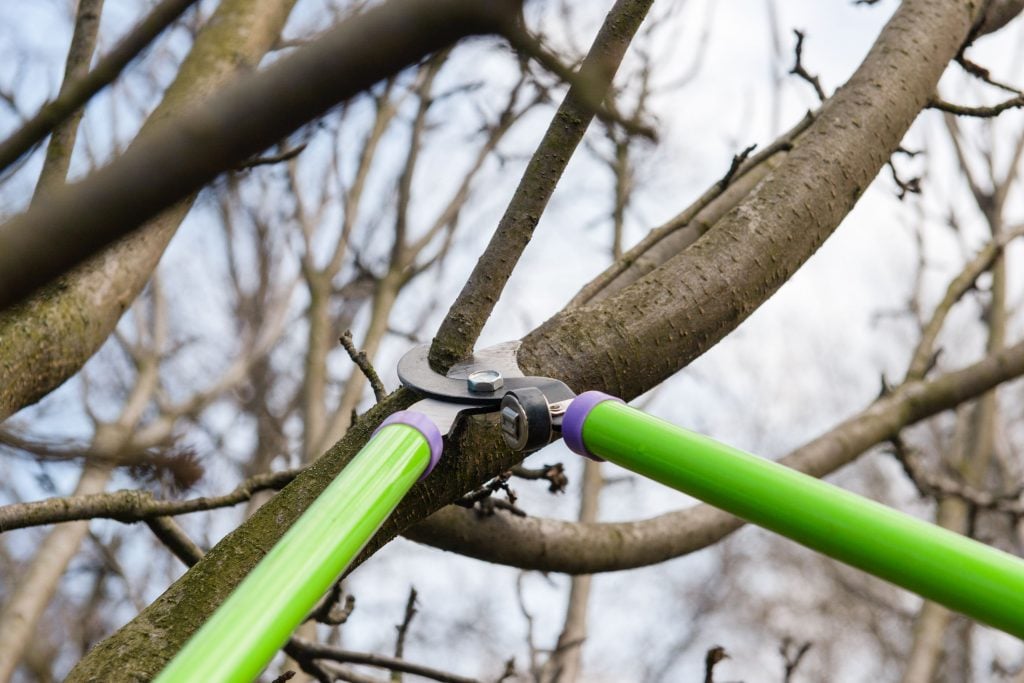
Pruning is removing any branches or shoots that are dead, damaged, or diseased. Most plants and trees need some pruning, even if they are low maintenance. Pruning keeps your apple trees healthy and beautiful. Healthy because any diseases and dead branches are removed before the entire tree is infected. Beautiful because the apple tree will have the desired shape that you want.
2. Why Do You Prune An Apple Tree
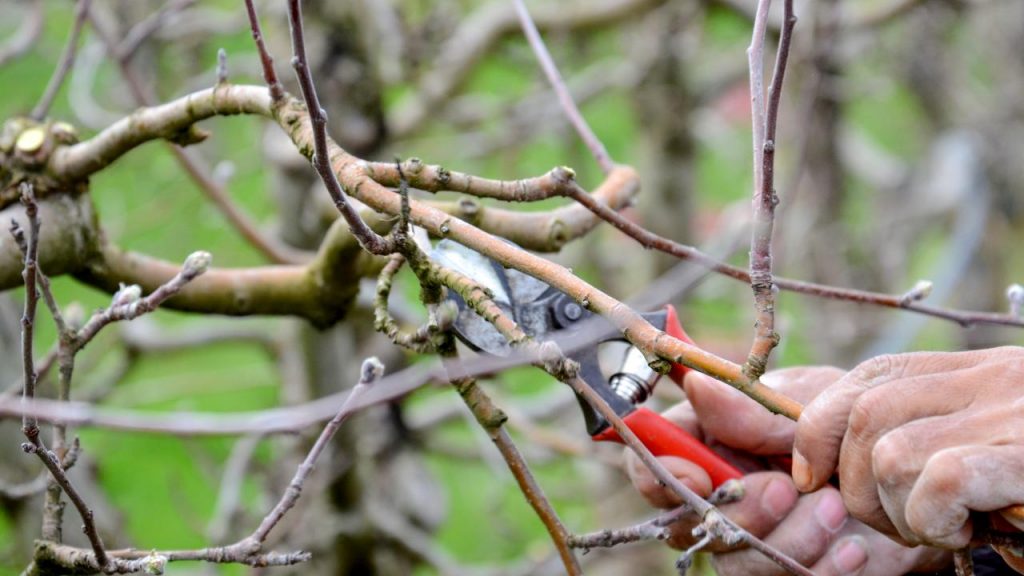
There are many reasons why you should prune apple trees. Some of them include improving the health of the tree, stimulating new tree growth, removing any unwanted growth, maintaining a tree form, increasing airflow of the apple tree, stimulating fruit bud development, thinning and removing fruits, removing any failure points, and much more.
3. When to Prune An Apple Tree
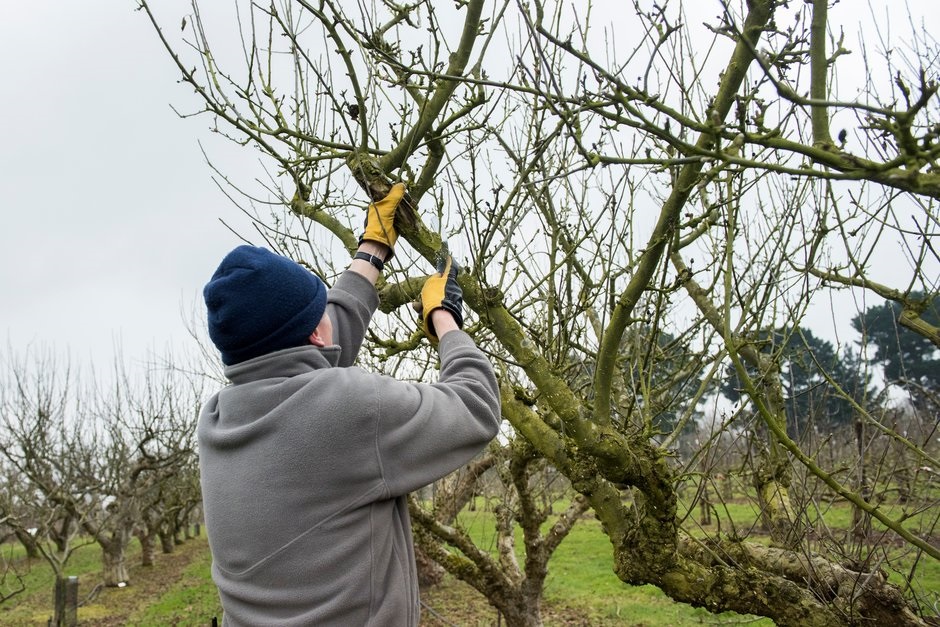
You should prune bush and standard apple trees between November and March, which is the dormancy period. If you live in an area with wetter winters, pruning should be done in late winter or very early spring. You can prune the bush or standard trees again in summer if they are being more vigorous. Shaped apple trees, like pyramids, cordons, fans, etc., are pruned during the summer for shape maintenance.
4. What’s the Difference in Winter and Summer Pruning
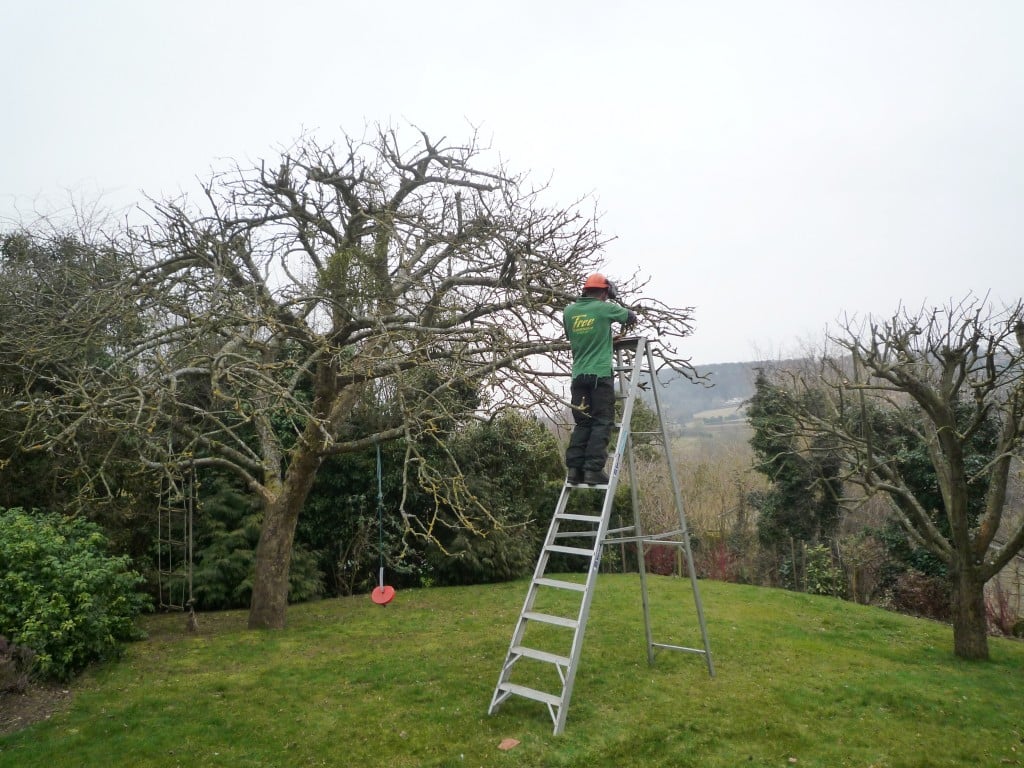
When you prune depends on the species of the fruit tree you have planted. Winter pruning happens after the leaves have fallen and before the buds open up with new leaves during spring; in the UK, this happens in December, January, and February.
Summer pruning is done for the formation of fruit buds and growth check; for the UK, it should be done from July end to mid-August. If you are confused, then just remember that winter pruning is for leaf health, and summer pruning is for bountiful fruits.
5. Which Tools are Needed for Pruning An Apple Tree
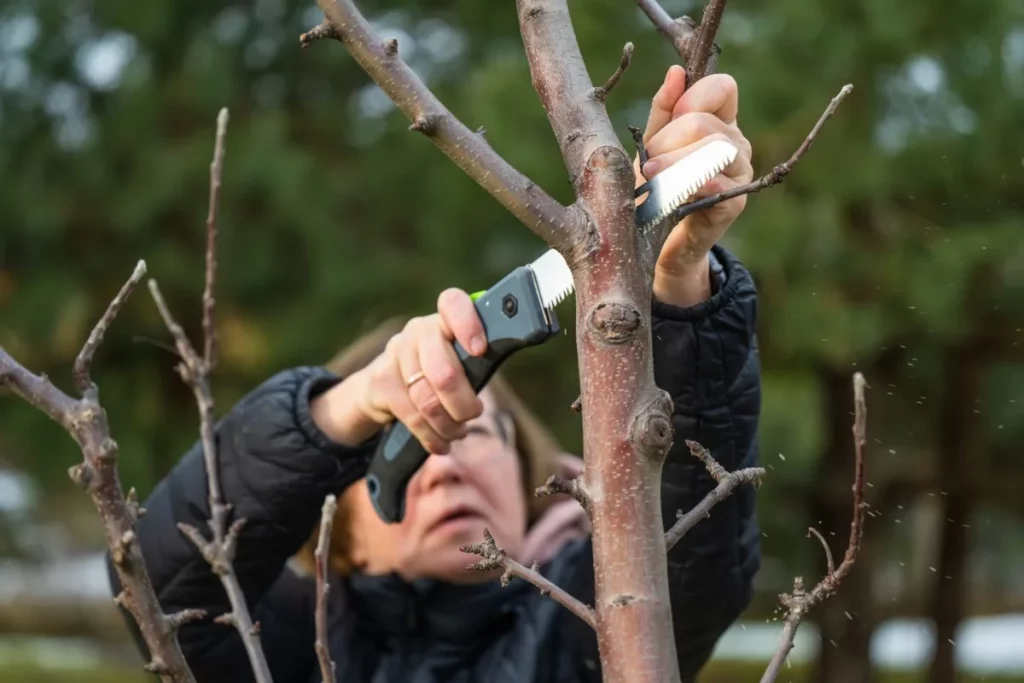
Pruning timing and methods depend on the type of apple tree you have planted; methods also depend on the reason for the pruning. Once you have the right pruning tools, you ensure that the tools are clean and sharp. The right pruning tools include secateurs, loppers, pruning saws, a sturdy ladder, and gloves. If you know the pruning requirements for a particular specie of apple tree, then you can easily decide if that specie is for you or if you should look at another type of apple tree to plant.
6. How to Prune an Apple Tree
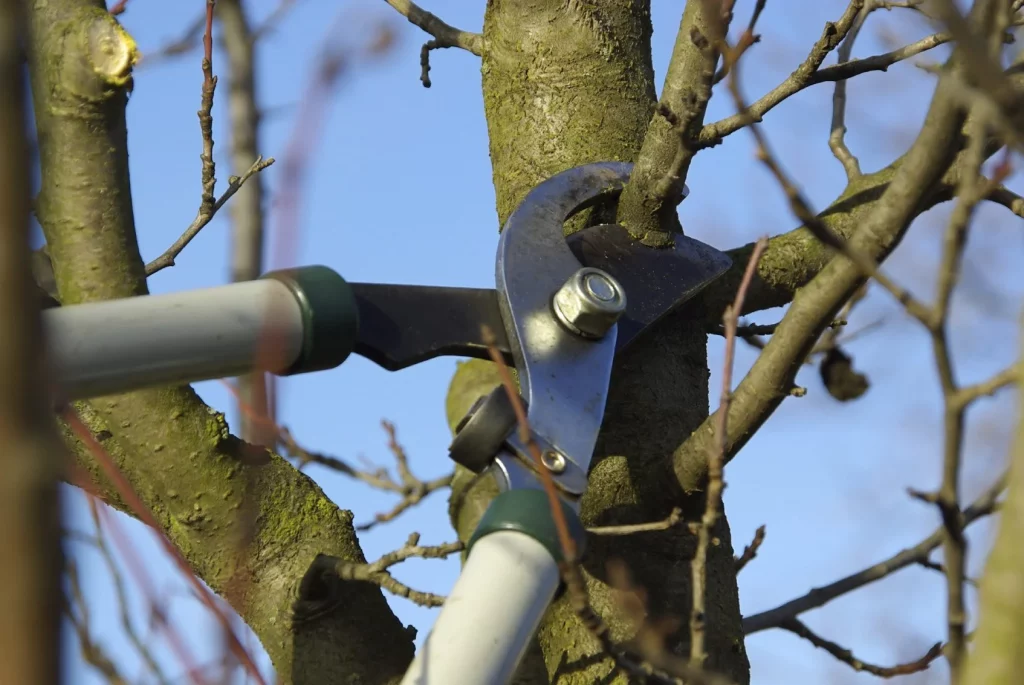
The first thing you need to do is prune any dead, diseased, or damaged branches. Next, you prune enough so that there is an open canopy and avoid any future damage. If you have bush and standard apple trees, cut away till a goblet-shaped structure is created. This type of pruning allows light to get to the canopy’s centre more successfully; with more light comes better fruit ripening and increased yield.
Prune any branches that are rubbing against each other, which causes branch damage in the wind, or branches that are and/or almost touching. You need to thin the tree branches to open up the tree canopy; birds should be able to fly between all the tree branches. Look at the tree from all sides.
You need to shorten the previous year’s growth on the main tree branches by a quarter to one-third; you cut the branch just above an outward-facing bud. This step encourages healthy new tree branches and the production of fruit spurs.
7. How to Prune an Apple Tree in Summer
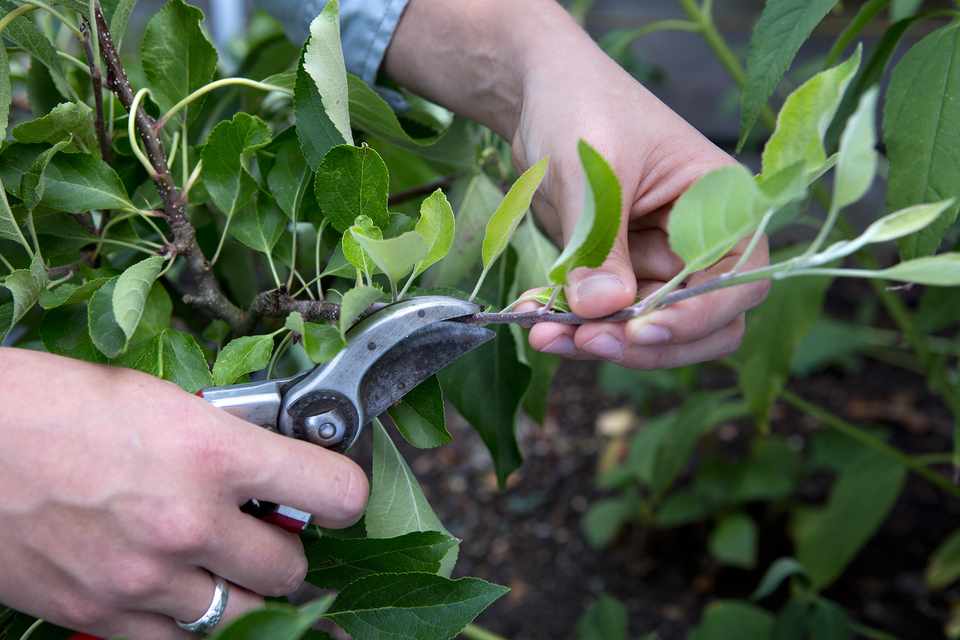
Once you understand when to prune an apple tree in the UK, you will also learn when to do summer pruning. When your apple trees have too much growth, even with light pruning or vigorous, you should consider summer pruning in addition to winter pruning. Summer pruning happens from mid-August to mid-September.
If the current season’s growth on side shoots is more than 30 cm, cut it down to 15 cm. Only the vigorous side shoots should be pruned, and not all of the shoots. Then when winter comes, you will be able to thin out the side shoots for crowded growth. Sometimes, regularly pruned trees become much larger than anticipated and outgrow their allocated space. Regular pruning helps in controlling the tree size without affecting fruit growth.
Planting and Growing An Apple Tree in the UK
An apple tree is the perfect and easiest fruit tree for beginner gardeners to grow in the UK. Even if you have a small garden, you can grow an apple tree as long as you pick the right variety.
1. Growing an Apple Tree in a Container
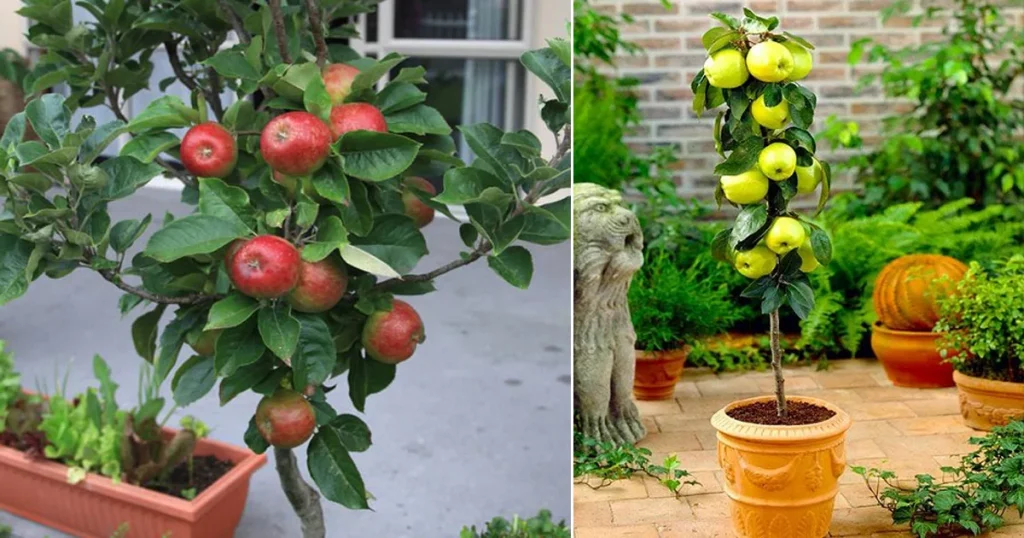
You can grow apple trees in containers as long as you choose the right apple variety because some types are more easily grown in containers or pots than others.
Rootstock is one thing you need to consider for container growing. Apple trees can be bought as pot-grown patio trees or bare-root trees which are grafted. These specimens are made up of the bottom portion or rootstock, which determines the tree’s size and vigour. The upper part or scion determines the fruit’s size, taste, and number. You need to dwarf the rootstock, which limits the tree’s size, and the tree grows easily in a pot. The most common rootstock for a patio apple tree grown in a container is M27 in the UK. The apple tree’s height will be around 1.5 m. The height for M9 and M26 is around 2.5 m.
The next thing you should consider is whether the tree you bought is already trained into a particular shape like a cordon, columnar, or fan. This is important because training and shaping can limit the apple tree’s size and vigour. You have the choice of buying pre-trained trees or doing the training by yourself.
The other thing you should think about is when your chosen apple tree has multiple fruit varieties grafted onto one rootstock. A duo fruit tree bears apples for eating and cooking. This tree option will save you space and time.
2. Containers for An Apple Tree
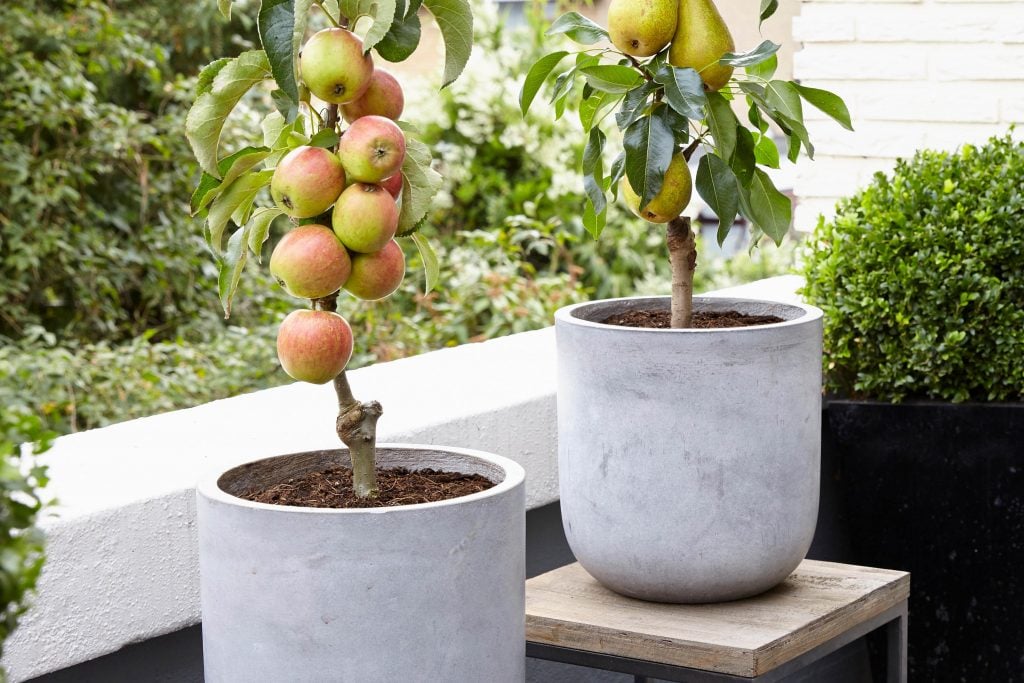
For any patio apple tree, the container should be large and sturdy. The container needs to handle the apple tree’s root system and avoid toppling or blowing over as the apple tree continues to grow. There should be good drainage on these pots so that the excess water drains away without any problems. Make sure your apple trees get enough moisture in the year.
3. Compost for Container Growing
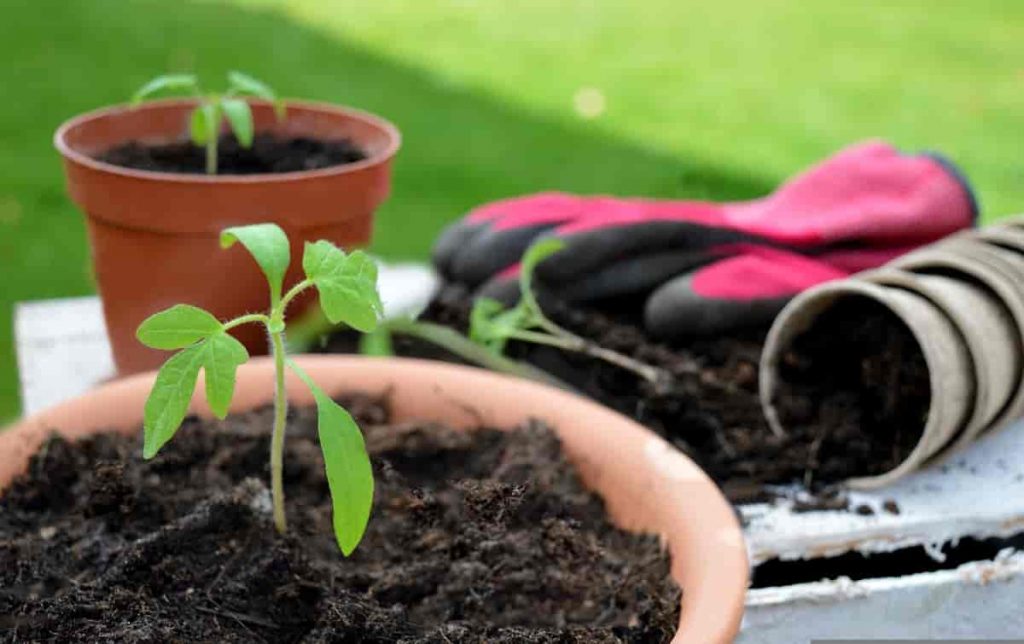
Since patio apple trees will be in a container for multiple years, growing medium and fertile conditions are a top priority. You should use a loam or soil-based compost. A peat-free multipurpose compost works well for apple trees. You can even make your own mix with soil or loam, leaf mould, and homemade compost.
4. Potting up Apple Trees
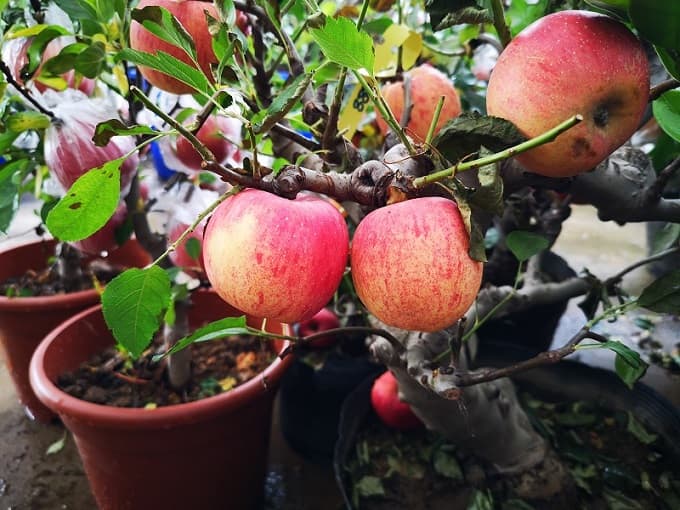
You need to pot up your apple tree as soon as possible, whether you bought a bare-root or a pot-grown tree. In the container, put some growing medium and then the young tree. It should be upright and at the same depth as the previous container. Add more growing medium around the root ball. Water the tree and mulch with organic matter to the top of the container. The mulch should not mound up around the tree trunk; otherwise, there will be rotting in these wet conditions.
The apple tree should be placed in an appropriate spot, full sun or partial shade, all based on the variety. During the spring and summer, make sure to water it enough and consistently. You might need to protect the trees against a late frost with some cover. Every 2 – 3 years, repot your apple tree with new compost so that the plant stays fertile. To properly feed your apple tree, replenish the mulch each year in spring; if the apple tree growth is not good, then organic fertiliser will be needed. Taking good care of your apple trees rewards you with apple harvests for many years.
Gardening Equipment Needed for Apple Trees
Any gardener worth their salt will have their gardening equipment. Young trees will help you in setting up your apple garden.
- Apple Braeburn Tree in 7.5L Pot
- Golden Delicious 24cm Pot 1.5M Tall
- Malus Appletini Mini Apple Tree
- Apple Patio Fruit Tree Bare Root
Once you know when to prune an apple tree in the UK, pruning tools are necessary.
- 8″ Professional Secateurs
- Professional Anvil Lopper
- Telescopic Tree Pruner, 100-240 cm
- Garden Platform Step Ladder
- 1x Pair of Unisex Leather Gardening Gloves
Final Thoughts
You should plant an apple tree in your garden, especially if you are living in the UK. Even an amateur gardener can manage an apple tree; they are a favourite among gardeners. If you already have one in your garden, you should nurture it and reap the rewards. If you do not have one, do not worry; they are fairly easy to establish. If this task sounds daunting, this article has excellent tips on how to have a well-shaped and productive apple tree.
Taking care of your apple trees is an essential part of your gardening routine. After all, you want to bite into those juicy apples. Pruning apples may seem difficult, but it is easy once you follow the steps. You will understand how much pruning is required when to prune an apple tree in the UK, how to prune an apple tree, why pruning is needed, and other steps.
In the comments below, write down your experiences of pruning apple trees and any advice for new gardeners.

![How and When to Prune an Apple Tree [UK]](https://www.thearches.co.uk/wp-content/uploads/How-And-When-To-Prune-An-Apple-Tree.jpg)

